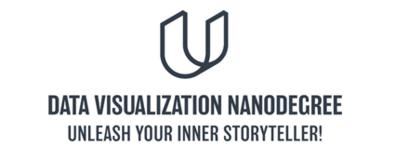| Udacity Data Science Nanodegrees Restarting |
| Written by Sue Gee |
| Monday, 27 May 2019 |
|
The demand for Data Scientists is still on the rise - and so are their salaries. Udacity's School of Data Science now offers seven Nanodegree programs and all of them start again on May 29th, with enrollment closing tomorrow. If you miss this datethe oppportunity will come around again in a few months. We last looked at Udacity's range of data-related nanodegree when it launched its School of Data Science last July. Since then Udacity has added new features to both the student services and the career services and these apply to all its Nanodegree programs. The monthly subscription now includes a 1-1 technical mentor who can be called for 6 hours or more per month plus check-ins with your mentor via weekly calls. Live chat, together with challenges is a new feature for the student community. Personal career coaching now includes monthly 1-on1 calls and to extend the existing resume services resumes are shared with 500+ employers. The first of the new programs is the Data Visualization Nanodegree in which learners start by building data visualizations and dashboards then proceed to drafting presentations using storytelling techniques, visualizations, and animations to provide data-driven recommendations. On the basis of devoting 10 hours a week, it has an estimated duration of 4 months and requires basic statistics and data analysis skills. Each of its four modules is built around practical projects (IN CAPS). They are:
Also new is the Data Engineer Nanodegree which requires Python and SQL skills and is spread over 5 months at 5 hours per week. In it you'll learn to design data models, build data warehouses and data lakes, automate data pipelines, and work with massive datasets. At the end of the program which has the four modules and associated practicals outlined below, you’ll combine your new skills by completing a data engineering capstone project.
There have been changes to the Data Scientist Nanodegree. Now at enrollment those without a background in Machine Learning are directed to a 3-month Intro to Machine Learning in which they will: Learn foundational machine learning algorithms, starting with data cleaning and supervised models. Then, move on to deep and unsupervised learning. Get practical experience by applying your skills to code exercises and projects. As this is a Nanodegree each module includes practical projects and intermediate Python programming knowledge and basic knowledge of probability and statistics are recommended prerequisites. Program Two in the Data Scientist Nanodegree is a further 4 months and has five modules, the last of which is a capstone:
There have also been changes to Programming for Data Science Nanodegree which is at beginner level and lasts three months, during which participants learn the programming fundamentals required for a career in data science. You can now choose between a Python track, as outlined in our previous report and one that introduces R with the same modules:
Programming for Data Science can also be followed up with the Data Analyst Nanodegree and there are also two business-oriented options, Predictive Analytics For Business and Business Analytics Nandegree. Enrollment for the next sessions of all seven ends on May 28th and you can start the courses just as soon as you enroll. More InformationUdacity School of Data Science Programming for Data Science with Python Programming for Data Science with R Related ArticlesData Scientist Best Paying Entry-Level Job Says Glassdoor Udacity Launches School of Data Science Udacity Launches Data Scientist Nanodegree What is a Data Scientist and How Do I Become One? To be informed about new articles on I Programmer, sign up for our weekly newsletter, subscribe to the RSS feed and follow us on Twitter, Facebook or Linkedin.
Comments
or email your comment to: comments@i-programmer.info
|
| Last Updated ( Wednesday, 16 September 2020 ) |



